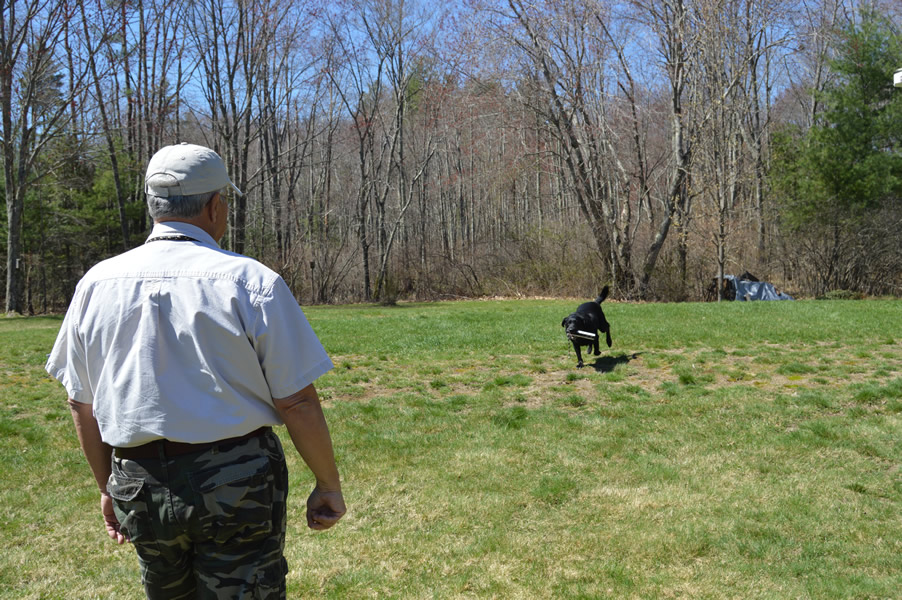
The come back whistle is never used while teaching sit to the whistle. For the sit to the whistle drill you want the dog to do just that; sit to the whistle, not come back to you.
The whistle, as a tool, is the best way to get your dog to come back to you from here, there and everywhere.
He will come back to you sooner and faster than just calling his name and saying come, or here, or whatever word you use. The come back whistle is not a single blast. This one has to have energy and urgency. I use five quick successive blasts. Quick da-da-da-da-da. No more, no less. Keep repeating that sequence for added urgency and encouragement to come.
At whatever age the dog understands the ‘come’ or ‘here’ verbal command, I introduce him to the comeback whistle. The five blasts also makes it something you can easily whistle with just your mouth which makes it great in places where you don’t want the noise of a whistle. This is a lesson you can begin in your home.
Command ‘come,’ and immediately follow it with five quick/exciting mouth whistles. “Come da-da-da-da-da.” And again, “Come da-da-da-da-da.” When the dog comes to you, make him feel like he was just appointed king of the marsh. After a while, drop the verbal ‘come’ and just blow the whistle. It doesn’t take him long to understand that five whistle blasts means come and come quickly. Once the dog gets it, blow it all the time until it is second nature for the dog to come to da-da-da-da-da! This is easy to teach and has many great benefits, especially calling the dog to come from a distance.
Valuable whistle tip:
Find a helper and walk away from him. At 30 yards away, then 50, then 100, then longer, have the helper blow the whistle alternating a single blast and the come back whistle. Listen and realize what the dog can hear at various distances from the whistle. And realize that in wind and rain the hearing distance is less and less. If the dog can’t hear the whistle, he doesn’t know you are trying to get his attention. Try it with different whistles and learn for yourself which one carries sound farther. Then you will understand while sometimes even when you blow the whistle as loud as you can, the dog doesn’t react. Chances are, he simply can’t hear you.